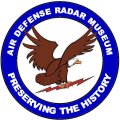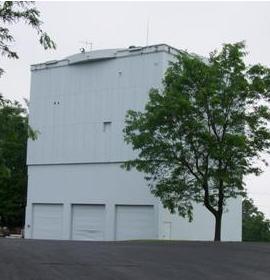 |
The Air Force Radar Museum Association, Inc. |
 |
The Air Force Radar Museum Association, Inc. |
|
The Air Force Radar Museum Association, Inc. is an Ohio-based, not-for-profit 501(c)(3) tax exempt corporation whose sole purpose is
the support and funding of the National Air Defense Radar Museum, which is being built on the grounds of the Ohio
Hi-Point Career Center, the former 664th AC&W/Radar Sqdn. in Bellefontaine, Ohio. The museum will be housed in the former AN/FPS-26 tower, which is long-term leased from the OHPCC. We are beginning our Capital Campaign to contact potential major donors for the construction and operation of the museum. We have a long way to go yet, but we're getting there. Your support is critical to our success! Please send in your membership application today. |
 Future NADRM |
What is the National Air Defense Radar Museum?Following the Air Defense TimelineFollowing the Second World War, tens of thousands of young men - and young women, as well - all members of the United States Air Force, were dispatched to small installations all over North America, Europe and the Far East. Their vital mission: to provide the first line of defense for North America against a former ally and new enemy, the Soviet Union. That first line of national defense? Small, usually highly remote Air Force radar sites. Unlike most military installations, these radar stations usually numbered 150 men or less. There were no major Air Force bases within a hundred miles of many of these stations; indeed, the nearest "city" consisted of a small farm or ranch community. In many cases these small, stand-alone sites were very remote, cold and - oftentimes - dangerous. And very few people knew just what constituted the mission of these airmen. Their mission was remarkably simple: keep the United States and Canada free of surprise Soviet nuclear attack. While the mission was simple, the execution was anything but. These airmen manned and supported the operation of long-range radar systems, which searched the skies round the clock - 365 days a year. Always searching electronically for approaching unidentified, perhaps hostile aircraft. Highly trained radar technicians, radar operators, weapons controllers, radio technicians and operators, power plant technicians and operators, and support personnel worked at this craft remotely and independently for almost 40 years, before the air-breathing bomber threat appeared to fade in favor of intercontinental ballistic missiles. To this day, little is known of this mission outside of the rapidly dwindling population of those airmen who served on these sites. Our mission, while not completely classified, was nonetheless little known and less understood by the general population, even our own parents or spouses. It was highly technical, state of the art (for the time) electronics. There was little remarkable to see from outside the station. There were no aircraft on the ground at all, save for a few stations co-located on a large Air Force bases and other major military installations. In fact, most of the airmen at these sites rarely, if ever, saw an aircraft as anything other than a glowing dot on a radar scope. There was nothing romantic about their places of duty and their mission. Many of the sites were highly remote, perhaps along the Aleutian Island chain, northern Canada, Greenland or even some distant mountain top in the continental United States. These sites were never seen by anybody except those stationed there and perhaps the local wildlife. There are no displays at other military museums, including the National Museum of the Air Force at Dayton, to document and educate the current and future generations of our mission. It is for this purpose we are in the process of creating the National Air Defense Radar Museum. Our goal is to fully document in an educational, entertaining way, the job of Continental Air Defense from manned bomber and later intercontinental ballistic missile attack. There is a large story to be presented: what threats drove the mission then and does this nation still need an air defense capability? What were the threats, the knowns and unknowns? How were these threats countered? What technology did we employ to detect and defeat the threat? What role did radar play? How did we do the mission before wide-spread introduction of radar? How were attacking bombers intercepted and defeated? And finally, what is our current need for air defense? Are nuclear-tipped ICBMs our the only remaining threat to the United States? The individuals who can accurately document this and relate their stories are aging rapidly. Most are in their 60s, 70s or 80s; many have already passed. If we fail in this effort, their stories and the incredible history of their valiant efforts will be lost for all time. Oh, there will be a few books that will partially document our mission, but no living, comprehensive, all-encompassing work will remain to help current and future generations understand what the vital mission of America's air defenders. It is our goal and intent to document the whole air defense mission from inception in the First World War through the 9/11 attacks on the Twin Towers and the Pentagon, and the failed attack likely intended for the U.S. Capitol. The museum will incorporate a wide range of interactive displays to assist in this task, along with photos, diagrams, maps, and artifacts. Visitors will experience a taste of the life of our servicemen and women at the remote outposts. They'll participate in and learn the skills required of our air defenders as they ceaselessly monitored the threatening skies. They'll write backwards, on a radar operations plotting board, learn what a "Bubble Check" was all about, experience a few minutes in an air-raid shelter during the London Blitz, discover "Bear Hunting". In doing these things, we want our visitors to experience and enjoy the view from the top of the radar tower, perched at the highest point in Ohio. We have assets in place now. We hold a long-term lease on an entire former radar tower at the former 664th Aircraft Control & Warning/Radar Squadron at Bellefontaine, Ohio, which sits on the beautiful campus of the Ohio Hi-Point Career Center. We have several design consultants working with our development team now. Our mission was to protect the continent from nuclear attack. Our motto then, as now, was "Failure is not an option"; failure meant nuclear Armageddon. Our mission was a resounding success. We invite you to become a partner in this venture. |
|
Your donation in any amount will help us to reach our goals. If you would rather send a donation by check,
please make it payable to "AFRMA" and mail to: AFRMA, Inc., 9976 Stoudertown Rd., Baltimore, OH 43105. And
Thank You!
Donate by credit cardWant to donate with your credit card and not use Paypal? We'll take your credit card by postal mail. Please don't send credit card information by email! Print a form to donate by credit card (not Paypal) |
|||

|
|||